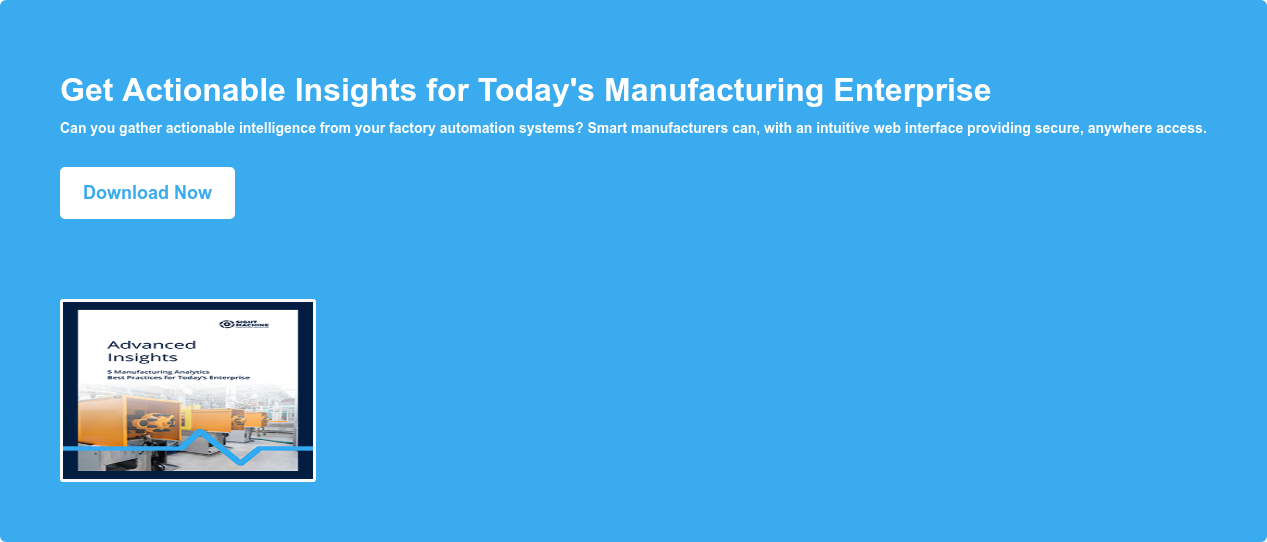Recently, Gartner published its first-ever Magic Quadrant focused on Industrial IoT platforms. These Magic Quadrants, among the best-known rankings produced by tech analysts, all follow the same format: completeness of vision on the horizontal axis, and ability to execute on the vertical axis. And, of course, as with most other 2×2 matrices, all the entrants anxiously hope to be placed in the upper-right quadrant.

So, which IoT platforms made it to the coveted upper right? Not one of them. In fact, none – not IBM, SAP, PTC/ThingWorx, Oracle, or any of the others –even made it above the mid-way horizontal line denoting those with strong ability to execute. In my more than two decades in Silicon Valley tech companies, I don’t recall ever seeing an assessment quite like this.
While I am not allowed to quote directly from the report (called “Magic Quadrant for Industrial IoT Platforms”), I did have an informal conversation with a Gartner manufacturing analyst a few months ago about IoT platforms, which was quite enlightening. I asked him why many OT leaders struggled with determining a tangible ROI from their IoT platform investments. He stated, “Use cases drive ROI, but out-of-the-box IoT platforms can’t deliver manufacturing use cases by themselves. The onus of enabling a use case using an IoT platform falls on the shoulder of the customer or a systems integrator.”
Perhaps the challenge for this quadrant assessment is its underlying focus on “multi-industry” – a frame of reference that is more vendor-friendly than focused on how customers think. It turns out the Gartner report only considered platforms that served two or more distinct verticals (e.g. manufacturing and transportation or healthcare). Unfortunately, while multi-vertical presence is good for a software vendor, it doesn’t deliver unique value to a customer in a specific vertical. At Sight Machine, we’ve had the opportunity to focus solely on one industry – manufacturing. Because Sight Machine is focused solely on manufacturing, it wasn’t eligible to be included in the analysis. But, therein lies a fundamental learning. It is precisely because of this laser-focus on one industry, that we (and other companies with this kind of focus) have been able to not only deliver on a vision for industrial transformation but also provide our customers with the ability to execute against that vision.
Customers invest in IoT platforms to answer two basic questions: “What’s happening?” and “Why is it happening?” To properly answer these questions and actually deliver business value, one needs to understand their data within the context of their operations.
IoT platforms typically do a good job of collecting data from a variety of data sources. They also have good visual tools for graphing data. But when it comes to making sense of that data and using it to solve problems within a specific industry domain, customers are on their own.
Collecting data is perhaps 25% of the problem, the beginning of the value chain. At the end of the value chain is visualization, maybe another 25% of the problem. It’s in the middle – transforming data to make it meaningful within the context of a use-case, that is the biggest and most important part of the problem. It’s here where most IoT platforms do little to help you, by virtue of their multi-industry, horizontal DNA. Manufacturing is a particularly challenging environment for generic IoT platforms because there is greater data variety than in any other industry vertical.
In the public imagination, big data software is like a miraculously smart, giant brain. Just pour in the data, the more the better, and the software will figure out what it all means. In reality, the users (data scientists, operations managers or systems integrators) are responsible for figuring out how to make the data useful for solving their specific problem.
So why is this difficult? It’s because the use cases for each industry is very different. Getting the most cheese from a vat of milk, selecting which windmills to operate under today’s weather conditions, or managing a network of water meters are very different problems involving separate bodies of knowledge. These different use cases all require unique data models that articulate the complex relationships between the data in each industry.
Manufacturing data is especially challenging to understand. Most of the machines in today’s factories were never designed to provide data for the kind of holistic, factory or enterprise-wide analytics companies are trying to do. Unfortunately, it’s extremely difficult for multi-industry IoT platforms to account for these manufacturing industry-specific relationships.
Manufacturers considering adopting an IoT platform should insist on seeing exactly how customers used the platform to turn data into insight – within and across different manufacturing plants. They also need to understand what resources are required to give operational context to the IoT platform data. Otherwise, they risk ending up with a very expensive data lake, with no way to understand what lurks below the surface.
Only by incorporating the unique relationships between industry-specific processes and data can IoT platforms deliver real business impact. Without this, most of these tools will likely continue to struggle with Gartner’s vision and execution assessment. My guess is that a Gartner IoT magic quadrant that is more focused on industry-specific solutions would tell a far different story and would also be relevant from a customer perspective.
To find out how an IoT platform built for manufacturing can deliver business impact, visit Sight Machine’s use cases here.







